4:20pm 50˚F, partly cloudy
As I approached my sit spot, the sun was beginning to set. The sun brightly shone through my tree of focus. In my first fifteen minutes of tuning in, I was surprised at the lack of activity, bird activity especially, but there seemed to be little to no visible life aside from plants. I found this fifteen minutes quite monotonous compared to tuning in before, mainly due to the lack of birds. The dull, muffled, constant sound coming from the interstate with a few tire skids every now and again were the main noises I heard. I did hear some sparrows and finches in the distance, nowhere near me, and their calls were muffled. Since I refilled the bird feeder, I expected to see more activity, if not from birds, at least from squirrels, which usually bombard the feeder. I found myself looking around my sit-spot area, in the sky, anywhere I could to try and find some moving life. At this time, something caught my eye that turned out to be a leaf falling from the red maple after the slightest breeze. While recording my observations after the tune-in time, I would usually miss lots of activity. However, something about today just was not very suitable for birds.
When it came time to revisit my three objects, I first wanted to focus on the red maple because despite the saddening lack of birds today, the red maple has turned completely red! I know, I know, I never thought this day would come! This change from pretty much all green to fully red happened over the course of maybe four days, which I find astounding. Do all red maples follow this pattern of being green for months then suddenly turning red in a few days? If so, what is the evolutionary advantage to this rapid change? The sugar maple next to the red maple turned fully orange early in the fall and is now completely bare of leaves. Comparing the leaf loss of the sugar maple to that of the red maple, as well as the leaves on the ground around the red maple, I would estimate that the red maple has lost about 25% of its leaves. I took a photo from a distance as well as an up-close photo of some of the leaves to show their true color. I will include a side-by-side of the red maple picture from my last post to now.
As for the other objects, the uprooted red maple root has not changed in appearance. I included a side-by-side comparison of the root as well to see if I was missing a difference. The lighting makes the root look different, but the only true difference is the fallen leaves on the ground around the root. The root’s color and texture have remained the same. The spider web still appears uninhabited. What spider used it, and how long was the web in use? I will never know, but it’s interesting to think about. As an aside, as I was writing about the root, the first of two observed bird activities during my journaling occurred. A male cardinal flew directly into the center of the red maple but did not ever approach the feeder. I never saw it again, but the cardinal saved me from having a sit spot void of birds!
Next, I listened for five minutes with my eyes open followed by listening for five minutes with my eyes closed. With open eyes, I found the light of day, what little light was left, allowed me to better focus. I heard a few birds but mostly neighbors’ dogs and the interstate noises. Then, lots of rustling in the top of the red maples startled me. These noises lasted for about fifteen seconds and sounded like birds fighting or distressed. With my eyes shut, the same noise came from my left (SW) in some kind of coniferous trees bordering our yard but part of our neighbor’s property. The birds, again, sounded like something was definitely going on. Even though I heard similar things with my eyes open vs. shut, I prefer having my eyes open to focus on things auditorily. At this point, the second bird activity occurred. My eyes were opened as I was about to move to the next guided question, and about twenty birds flew out of the top of the red maple where I had previously heard lots of noise. They flew out in a triad formation and headed SE. Looking at them from underneath, they looked dark gray, but I could not tell their species because they flew away so fast.
I chose the red maple trunk to focus on during the ten minutes of observing one square meter of a habitat. The bark was mostly gray but tan at the areas where the bark had been peeled back. A small hole caught my eye as well. I included a picture but am not sure if the hole was made by an insect, woodpecker, or a parasite. Aside from the grayness on the surface, there were very small, thin green moss spots and whitish spots on the trunk’s bark. The bark at the base, where the mulch begins, looks especially wrinkled. I dug at some mulch to see if I might find a living organism and found a very small, thin worm, which looked too small to be an earthworm. I did not see any evidence of decomposition on the bark, which I would hope I wouldn’t. The only decomposition I saw was the leaves on the mulch that had fallen from the red maple. They felt soft and soggy and were in the early stages of decomposition. I’d like to know what life exists below the mulch’s surface and below the bark’s surface. Though I didn’t have a bird-filled journaling session, the most exciting part of this journaling was by far the red maple finally living up to its name.
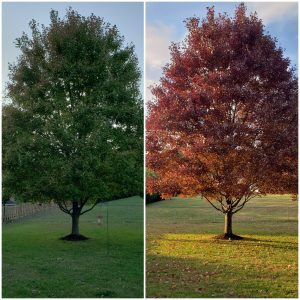
Last Blog vs. This Blog-What a Difference!
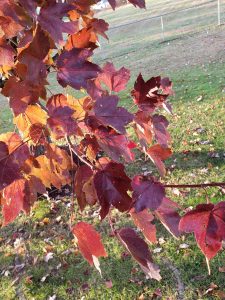
Red Maple Leaves

Root Last Blog vs. This Blog
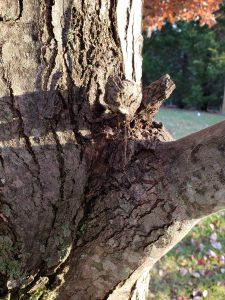
Web (What’s Left)
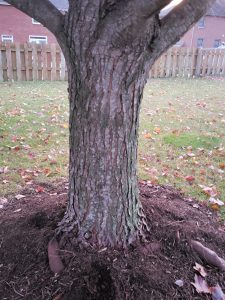
1 Square Meter of Habitat- Red Maple Tree Trunk
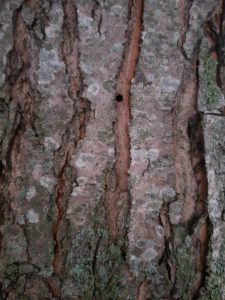
Hole in Bark

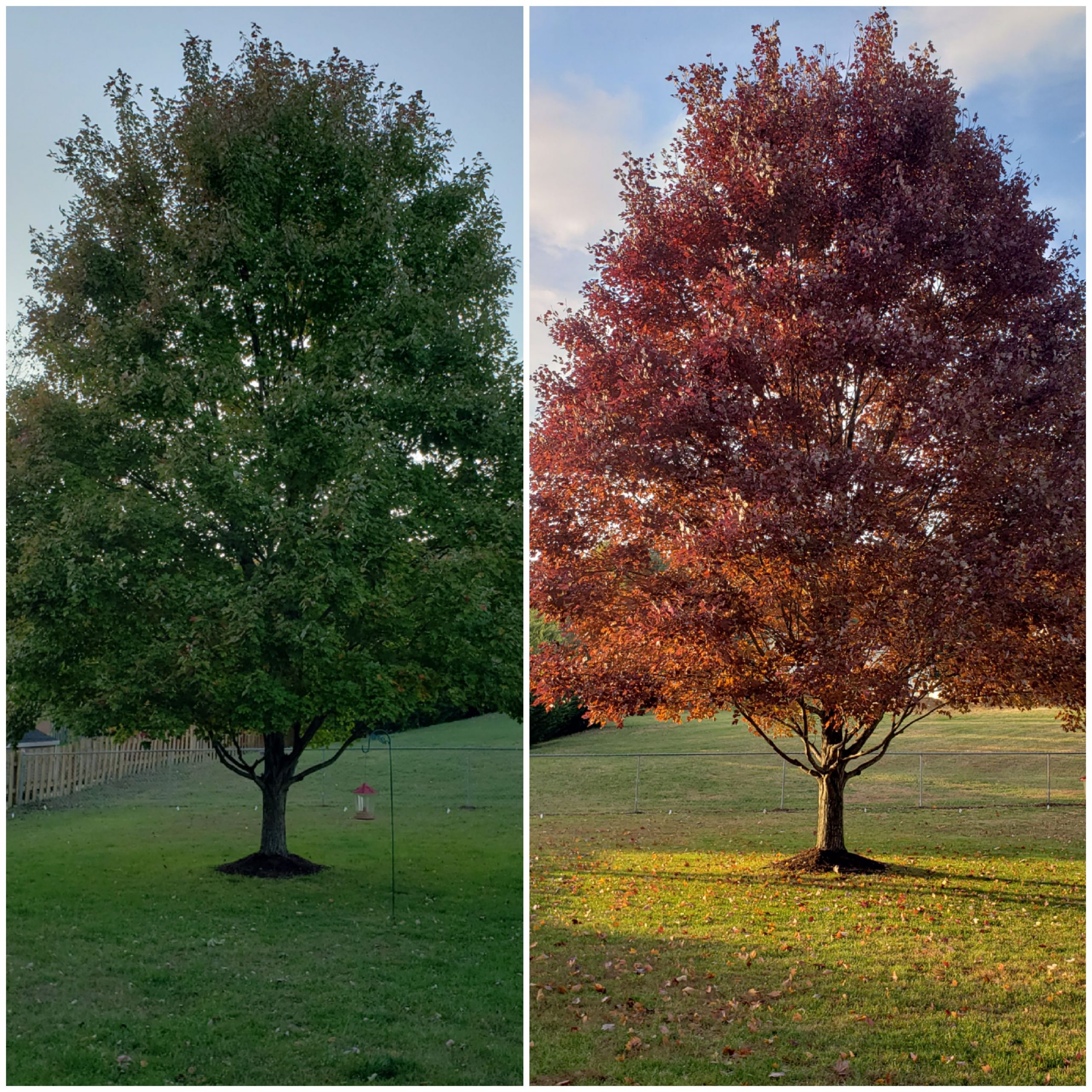
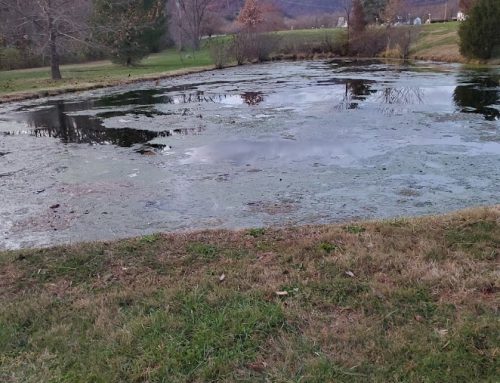

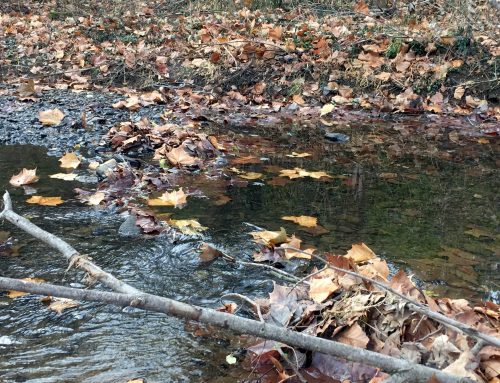
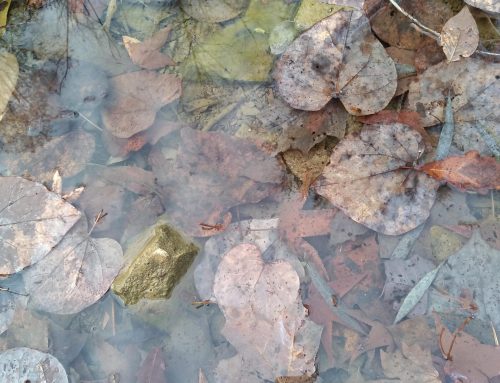
That has to be one of the prettiest trees I have seen this season. We have had pretty good fall foliage this season but I haven’t seen a lot of red so it is nice to see such a pretty tree. The hole inside of the tree bark is such a perfect circle I wonder which one of the options you listed in your blog is the culprit?
This tree is so beautiful that is takes my breath away! It also is such a great example of change in seasons, espically compared to the previous picture! How do you think it will look after break?